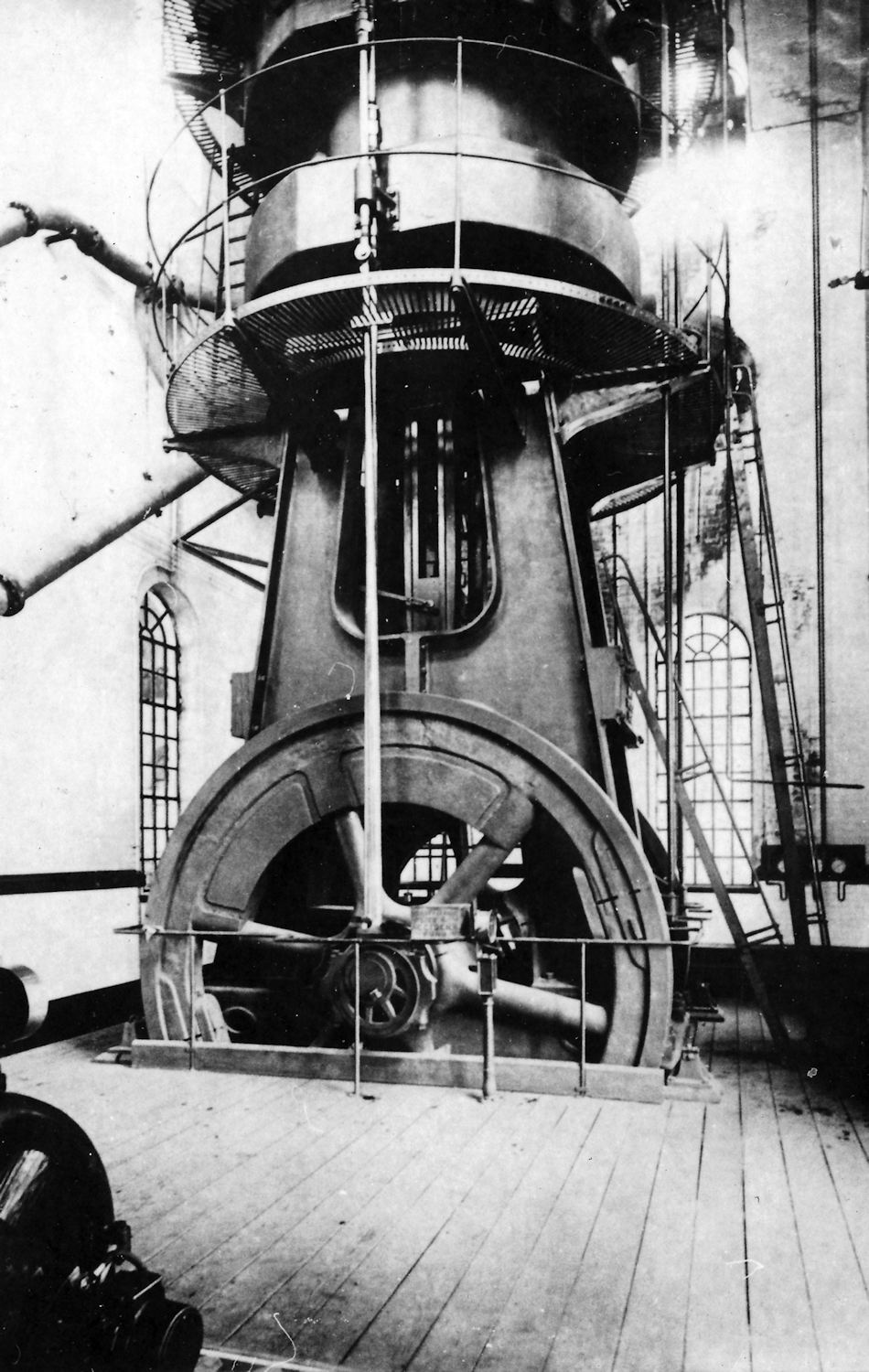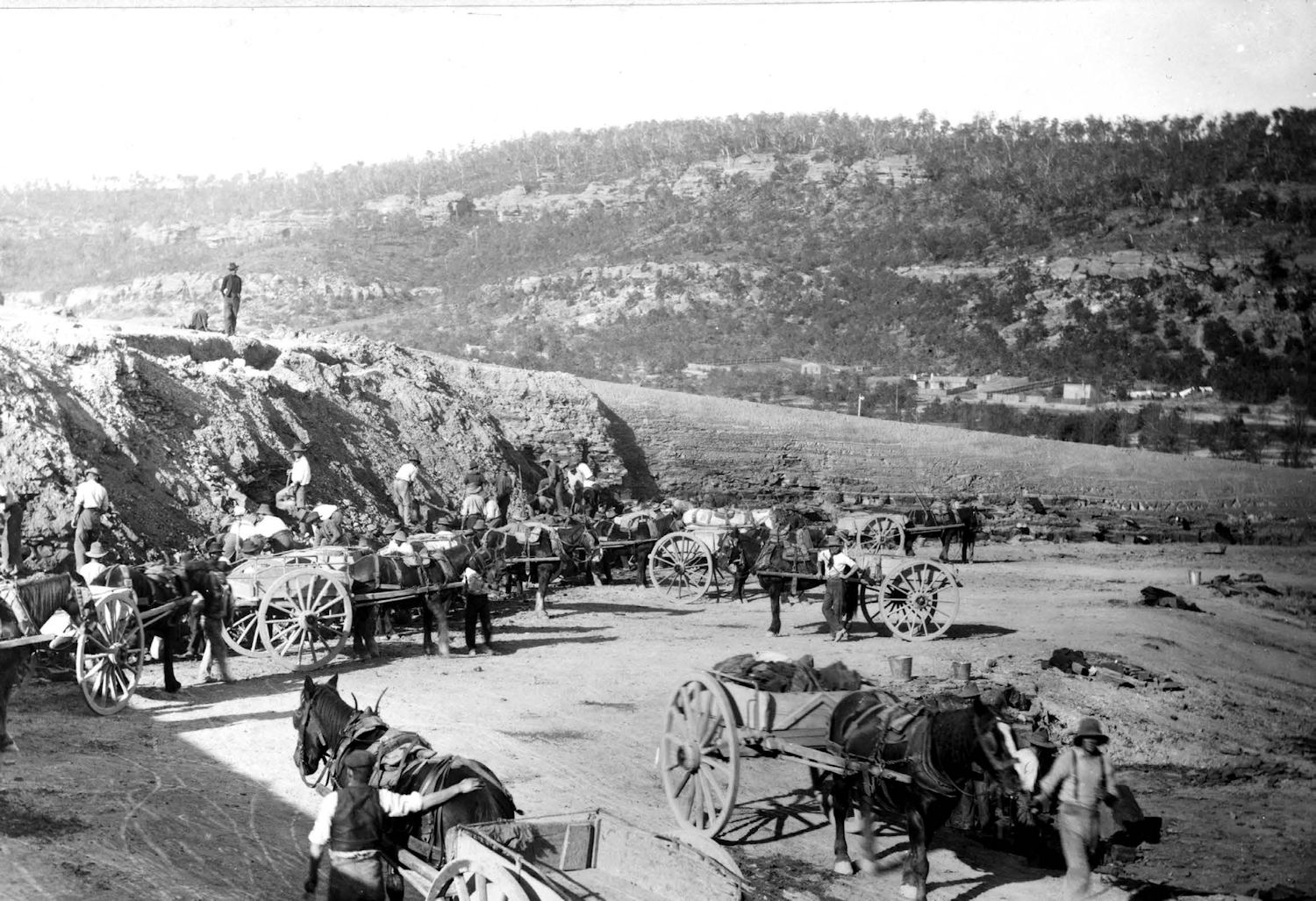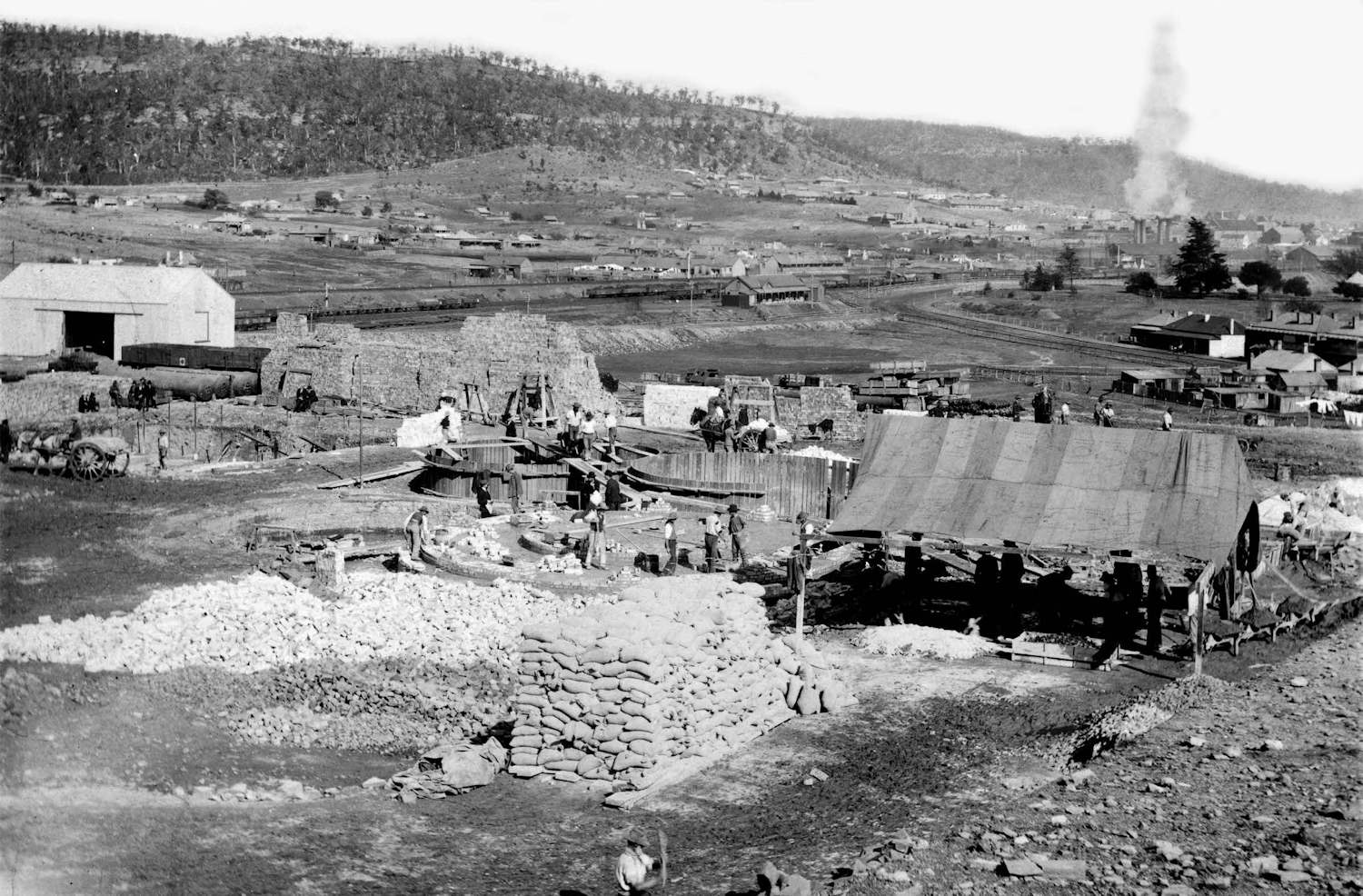Assembled on site
The Davy engine house was constructed in October 1906 to house a new engine manufactured by Davy Bros of Sheffield in the UK. The 12-metre high blowing engine had a 4.5 metre diameter flywheel and was assembled on site in 1907. Sandford later purchased a Parsons blowing engine and the Davy engine became a backup. The casings for the two flywheels bear a deposit of sludge from the operation of the engine and are intact. The interior is tiled and calcimined. The engine house was originally roofed with an iron
water tank.
A coal stage
You are standing on Coal Stage Hill. This cut was excavated to prepare for the construction of William Sandford’s blast furnace and supporting structures.
The entrance road follows the line of the access road laid in 1906, which incorporated material excavated from the
blast furnace site. Behind the entrance road you can see the private rail link built by Charles Hoskins from 1910.
It travelled past Esk Bank House to the steelworks. Its embankments were built with slag from the blast furnace.
Hard yakka
To your left across the Great Western Railway line you can see evidence of the Middle River coal seam.
The excavation was undertaken in 1906 using picks, shovels, horse-drawn carts and a half-tonne of gelignite. The vertical face that remains is a striking feature of the site and provides the best view of the blast furnace, now as in 1907.
After closure and demolition of the blast furnace, dumped scrap metal and excavation works filled part of the cutting that formed the rail siding to blast furnace No. 2.






